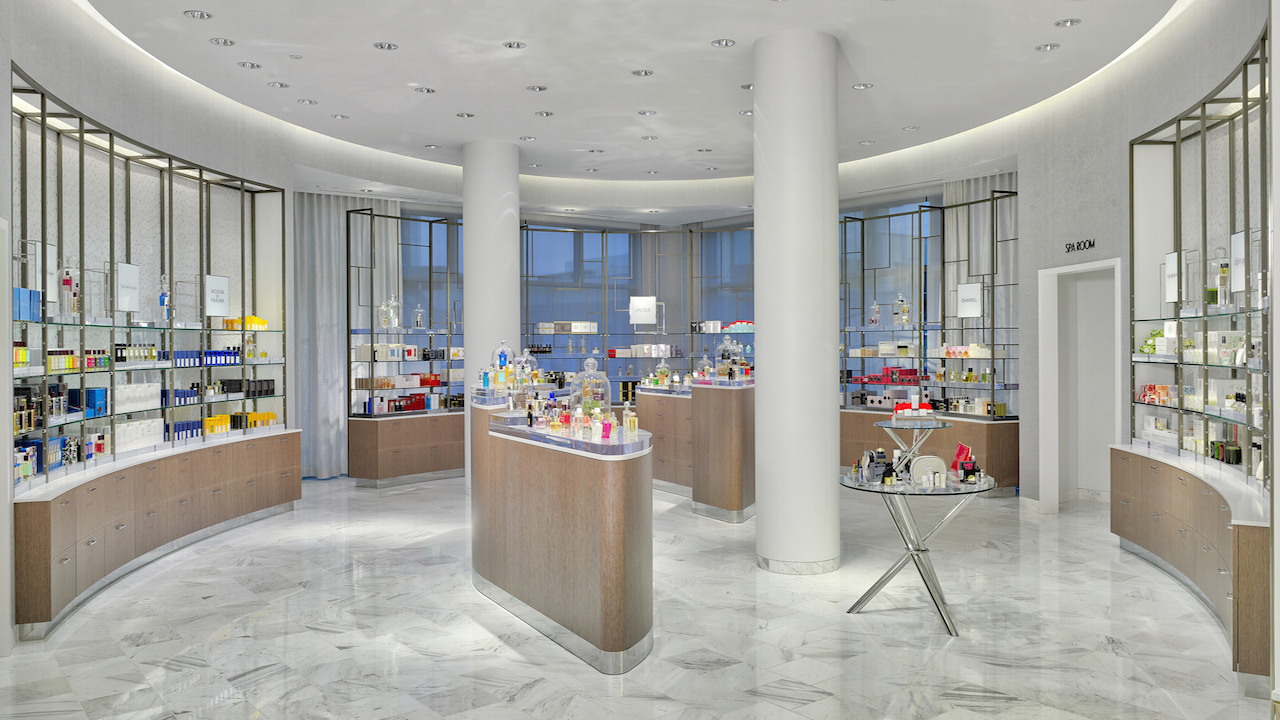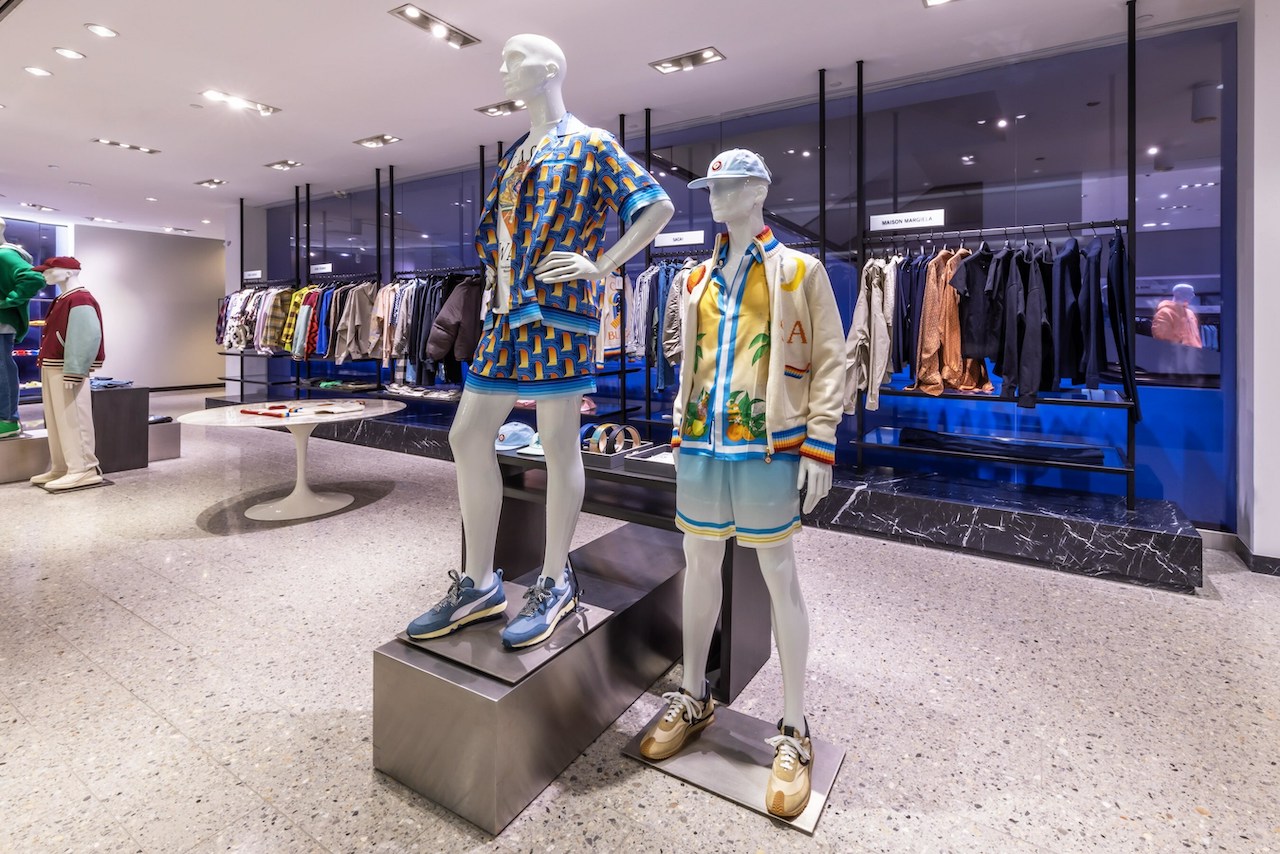Industry Overview and Competitive Landscape: Saks And Neiman Marcus

Saks and neiman marcus – The luxury retail industry is a thriving sector, catering to the affluent and discerning consumers who seek high-end products and exceptional shopping experiences. Key players in this industry include Saks Fifth Avenue, Neiman Marcus, Nordstrom, Bergdorf Goodman, and Bloomingdale’s.
Saks and Neiman Marcus are two of the most prominent luxury retailers in the United States. Saks has a market share of approximately 4%, while Neiman Marcus holds around 3% of the market. Both companies operate a network of upscale department stores across the country, offering a wide range of luxury merchandise, including apparel, accessories, jewelry, and home goods.
Competitive Landscape, Saks and neiman marcus
The competitive landscape between Saks and Neiman Marcus is intense, as both companies target a similar customer base and offer comparable product offerings. Saks has traditionally been positioned as a more accessible luxury brand, while Neiman Marcus has focused on providing a more exclusive and personalized shopping experience. However, in recent years, Saks has made efforts to elevate its brand image and compete more directly with Neiman Marcus in the ultra-luxury segment.
Both companies have invested heavily in digital channels to reach a wider audience and enhance the customer experience. Saks has launched a number of e-commerce initiatives, including a mobile app and a loyalty program, while Neiman Marcus has partnered with online retailers such as Farfetch and Net-a-Porter to expand its reach.
Saks and Neiman Marcus, two renowned department stores, offer an unparalleled shopping experience. However, even amidst their luxury, the recent incident of a Delta flight being diverted due to spoiled food serves as a stark reminder of the challenges faced in maintaining impeccable standards.
Despite this isolated incident, Saks and Neiman Marcus remain steadfast in their commitment to delivering exceptional quality and customer satisfaction.
Despite the intense competition, Saks and Neiman Marcus have managed to maintain their positions as leading luxury retailers. Both companies have a loyal customer base and a strong reputation for quality and service. They are well-positioned to continue to thrive in the future as the luxury retail industry continues to grow.
Saks and Neiman Marcus, two giants in the world of luxury retail, have joined forces to create saks fifth avenue neiman marcus, a shopping destination that combines the best of both worlds. With a wide selection of designer brands, exclusive collaborations, and exceptional customer service, saks fifth avenue neiman marcus is the ultimate destination for discerning shoppers.
Whether you’re looking for the latest fashion trends or timeless classics, you’re sure to find it at saks and Neiman Marcus.
Customer Demographics and Segmentation
Saks and Neiman Marcus target a similar customer base, namely affluent individuals seeking high-end fashion and luxury goods. However, there are some subtle differences in their customer profiles.
Demographics
- Age: Both Saks and Neiman Marcus cater primarily to an older demographic, with an average age of 45-55.
- Income: The target customers for both brands have high incomes, typically exceeding $250,000 annually.
- Location: Saks and Neiman Marcus have a strong presence in major metropolitan areas, particularly in the Northeast and West Coast.
Psychographics
- Lifestyle: Saks and Neiman Marcus customers lead affluent lifestyles and value luxury and exclusivity.
- Values: Both brands appeal to customers who appreciate quality, craftsmanship, and attention to detail.
- Aspirations: Saks and Neiman Marcus customers aspire to project a sophisticated and stylish image.
Shopping Behavior
- Frequency: Saks and Neiman Marcus customers are frequent shoppers, making multiple purchases throughout the year.
- Spending: The average customer spends a significant amount of money on each purchase, often exceeding $1,000.
- Channel: Both brands have a strong online presence, but their customers also enjoy shopping in-store for the personalized experience.
Differences between Saks and Neiman Marcus
- Price point: Saks generally offers a wider range of price points compared to Neiman Marcus, catering to a broader customer base.
- Brand positioning: Saks is known for its fashion-forward and trend-setting offerings, while Neiman Marcus is perceived as more classic and traditional.
- Store experience: Saks stores are typically more modern and contemporary, while Neiman Marcus stores have a more traditional and elegant ambiance.
Product Offerings and Brand Positioning

Saks and Neiman Marcus offer a wide range of luxury products, including clothing, accessories, jewelry, home goods, and beauty products. However, there are some key differences in their product offerings. Saks is known for its more contemporary and fashion-forward offerings, while Neiman Marcus is known for its more classic and timeless pieces.
In terms of brand positioning, Saks is positioned as a more accessible luxury brand, while Neiman Marcus is positioned as a more exclusive and aspirational brand. Saks targets a wider range of customers, including both younger and older shoppers, while Neiman Marcus targets a more affluent and discerning clientele.
These differences in product offerings and brand positioning have a significant impact on customer perception and brand loyalty. Saks is seen as a more approachable and relatable brand, while Neiman Marcus is seen as a more exclusive and aspirational brand. Saks is able to attract a wider range of customers, while Neiman Marcus is able to attract a more affluent and loyal clientele.
Saks Fifth Avenue
Saks Fifth Avenue is a luxury department store chain that was founded in 1894. The company operates over 40 stores in the United States, Canada, and the Middle East. Saks is known for its wide range of luxury products, including clothing, accessories, jewelry, home goods, and beauty products. The company also offers a variety of services, including personal shopping, gift wrapping, and alterations.
Saks is positioned as a more accessible luxury brand. The company targets a wider range of customers, including both younger and older shoppers. Saks offers a variety of price points, from affordable to high-end. The company also offers a variety of promotions and discounts, making its products more accessible to a wider range of customers.
Neiman Marcus
Neiman Marcus is a luxury department store chain that was founded in 1907. The company operates over 40 stores in the United States. Neiman Marcus is known for its wide range of luxury products, including clothing, accessories, jewelry, home goods, and beauty products. The company also offers a variety of services, including personal shopping, gift wrapping, and alterations.
Neiman Marcus is positioned as a more exclusive and aspirational brand. The company targets a more affluent and discerning clientele. Neiman Marcus offers a higher price point than Saks, and the company’s products are typically more classic and timeless. Neiman Marcus also offers a variety of exclusive products and services, such as personal shopping appointments with top designers and access to exclusive events.